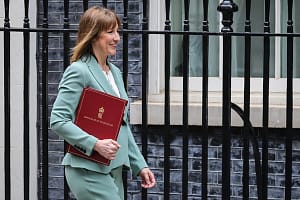The latest jump in UK inflation to 3.8% in July was not a big surprise – the Bank of England was already expecting an increase to 4% in September.
But rising inflation will continue to eat into real incomes and keep bond yields high, adding to the government’s cost of borrowing.
The biggest contribution to the jump in inflation last month came from transport costs, mainly due to a surge in air fares which can be volatile at this time of year.
However, there were also large upward contributions from hospitality and from food – two sectors which have been hit particularly hard by rising labour costs in the wake of last October’s Budget. The bigger picture is that UK inflation has continued to diverge from the euro area, where inflation has settled at around 2%.
This divergence is being driven by higher government-set prices (such as domestic energy bills and the national minimum wage), the continued pass through of higher employer taxes, and high housing costs as demand outpaces supply. There are still good reasons to expect inflation to start falling in October and drop back to the 2% target in 2026, which is why the Bank of England’s MPC narrowly voted to cut rates at the last meeting.
In particular, the large increases in food prices will drop out of the annual comparison and the cooling labour market should ease wage pressures. And unlike in the post-Covid period, money growth is relatively subdued. Nonetheless, the news of inflation looks set to get even worse before it gets any better.






Leave a Comment